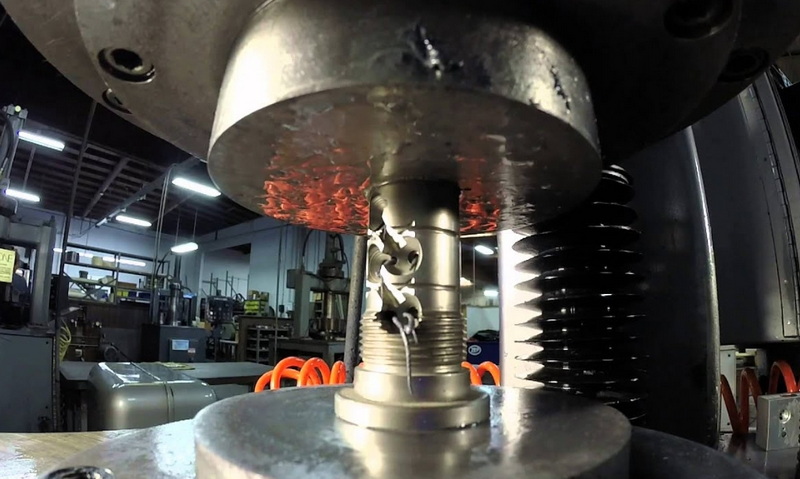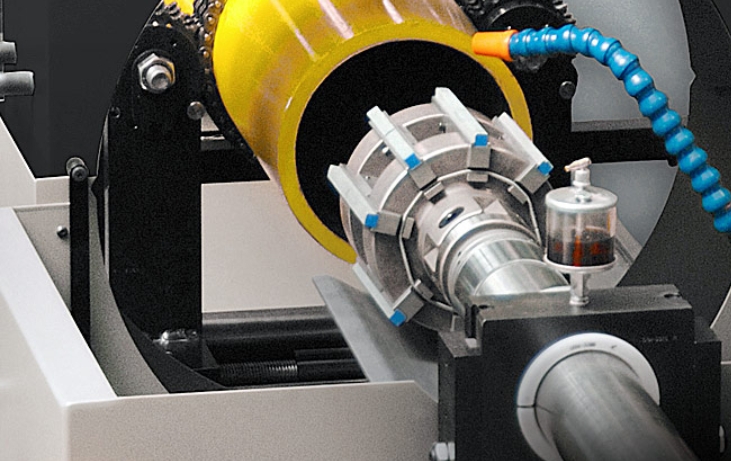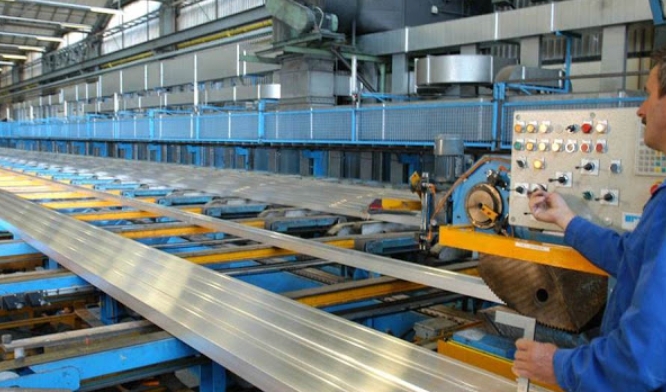Content Menu
● Understanding Extrusion Moulding Equipment
>> Types of Extrusion Moulding Equipment
● Key Factors to Consider When Choosing Extrusion Moulding Equipment
>> 1. Define Your Product and Production Requirements
>> 2. Material Compatibility and Processing Needs
>> 3. Production Capacity and Throughput
>> 4. Automation and Technological Features
>> 5. Energy Efficiency and Operational Costs
>> 6. Space and Facility Requirements
>> 7. Ease of Operation and Maintenance
>> 8. Budget and Total Cost of Ownership
>> 9. Manufacturer Reputation and Support
● Comparing Small vs. Standard-Sized Extrusion Moulding Equipment
● Common Pitfalls to Avoid
● Step-by-Step Guide to Selecting Extrusion Moulding Equipment
● Innovations and Trends in Extrusion Moulding Equipment
● Conclusion
● FAQ
>> 1. What is the most important factor when selecting extrusion moulding equipment?
>> 2. How do I determine the right production capacity for my extrusion moulding equipment?
>> 3. What are the advantages of automation in extrusion moulding equipment?
>> 4. How do energy-saving features impact operational costs?
>> 5. Should I consider used or low-cost extrusion moulding equipment?
● Citations:
Selecting the right extrusion moulding equipment is a pivotal decision that directly impacts the efficiency, quality, and profitability of any manufacturing operation involving plastics or polymers. Whether you're a seasoned manufacturer scaling up production or a newcomer entering the market, the process involves evaluating a complex set of variables—from material compatibility and production capacity to automation and after-sales support. This comprehensive guide will walk you through the essential factors, technical considerations, and practical tips to help you choose the best extrusion moulding equipment tailored to your specific production needs.

Understanding Extrusion Moulding Equipment
Extrusion moulding equipment refers to the machinery used to shape raw plastic or polymer materials into continuous profiles, such as pipes, tubes, sheets, or custom shapes, by forcing the material through a die. The process is highly versatile and widely used across industries, including packaging, automotive, construction, and consumer goods.
Types of Extrusion Moulding Equipment
- Single-Screw Extruders: Ideal for processing homogeneous materials and simple profiles.
- Twin-Screw Extruders: Suitable for complex formulations, compounding, and mixing of additives.
- Blow Moulding Machines: Used for creating hollow objects like bottles and containers.
- Sheet and Film Extruders: Specialized for producing flat products such as sheets and films.
Each type of extrusion moulding equipment has its own strengths and is best suited for particular applications, materials, and production scales.
Key Factors to Consider When Choosing Extrusion Moulding Equipment
1. Define Your Product and Production Requirements
Before evaluating specific models, clearly define:
- The type of products you intend to manufacture (e.g., bottles, pipes, sheets)[1][4].
- Material specifications (e.g., HDPE, LDPE, PVC, PET)[3][5].
- Desired output volume and production targets[2][4].
- Product dimensions, weight, and complexity[1][4].
A detailed understanding of your current and future production needs is crucial for selecting the right extrusion moulding equipment that can handle your workload efficiently[2].
2. Material Compatibility and Processing Needs
Different plastics have unique melting points, viscosities, and processing requirements. Ensure the extrusion moulding equipment you choose is compatible with the materials you plan to use[3][5]. For example:
- Rigid Plastics: Often processed with single-screw extruders.
- Flexible Films: May require cutter-compactor equipped extruders or special feeding systems[5].
- Recycled Materials: Might need specialized equipment for handling impurities and moisture.
3. Production Capacity and Throughput
Match the machine's output capacity to your production targets. Consider:
- Screw diameter and length, which directly influence throughput[5].
- Number of cavities or stations for blow moulding machines[4].
- Whether you need single or double station machines for higher output[4].
It's advisable to select equipment with at least 25% higher capacity than your current needs to accommodate growth and avoid bottlenecks[4].
4. Automation and Technological Features
Modern extrusion moulding equipment often includes automation features that enhance efficiency, consistency, and safety:
- Automated material feeding and mixing.
- Programmable logic controllers (PLCs) for precise process control.
- Quick-change dies and moulds for flexibility[2].
- Wall thickness controllers for uniformity in blow moulding[1].
While automation increases upfront costs, it can significantly reduce labor expenses and improve long-term productivity[2].
5. Energy Efficiency and Operational Costs
Energy consumption is a major operational expense. Look for extrusion moulding equipment with:
- Variable frequency drives or servo motors for energy savings[1].
- Efficient heating and cooling systems.
- Features that minimize material waste and downtime.
Energy-efficient machines may have a higher initial cost but offer substantial savings over time[1].
6. Space and Facility Requirements
Consider the physical dimensions of the extrusion moulding equipment and the layout of your facility:
- Ensure adequate space for installation, operation, and maintenance[3].
- Check for requirements like ventilation, power supply, and access routes.
7. Ease of Operation and Maintenance
User-friendly controls, clear interfaces, and accessible components make daily operation smoother and reduce training time[3]. Additionally, reliable after-sales service and readily available spare parts are essential for minimizing downtime[3][5].
8. Budget and Total Cost of Ownership
Balance the initial purchase price with long-term costs, including:
- Maintenance and repairs.
- Energy consumption.
- Downtime due to breakdowns or lack of support.
Sometimes, investing in higher-quality or more automated extrusion moulding equipment pays off through improved reliability and lower operational costs[1][5].
9. Manufacturer Reputation and Support
Choose reputable manufacturers known for quality, innovation, and customer service[3][5]. Evaluate:
- Warranty terms and service agreements.
- Availability of technical support and training.
- Reviews and case studies from other users.

Comparing Small vs. Standard-Sized Extrusion Moulding Equipment
| Feature | Small Extrusion Machines | Standard-Sized Extrusion Machines |
| Space Requirements | Compact, fits in smaller facilities | Requires larger installation space |
| Cost | Lower initial investment | Higher upfront cost |
| Production Capacity | Suitable for low to medium volumes | Ideal for high-volume production |
| Versatility | Good for prototyping, multiple materials | Handles more complex, high-output tasks |
| Maintenance | Easier and cheaper to maintain | May require specialized maintenance |
| Energy Consumption | Generally lower | Higher, but may have energy-saving features |
Small extrusion moulding equipment is ideal for startups, R&D, or niche production, while standard-sized machines are better for large-scale, continuous operations[3][5].
Common Pitfalls to Avoid
- Choosing solely on price: Low-cost machines may lack reliability, support, or spare parts, leading to higher long-term costs[1][5].
- Ignoring future needs: Underestimating production growth can result in frequent upgrades or replacements[2][4].
- Neglecting after-sales support: Poor support can lead to extended downtime and lost revenue[5].
- Overlooking energy costs: Machines with poor energy efficiency can erode profit margins over time[1].
Step-by-Step Guide to Selecting Extrusion Moulding Equipment
1. Analyze your product and material requirements.
2. Estimate current and future production volumes.
3. Research available machine types and configurations.
4. Shortlist reputable manufacturers and suppliers.
5. Request detailed quotations, including technical specs and support terms.
6. Visit reference sites or request demonstrations if possible.
7. Evaluate total cost of ownership, not just the purchase price.
8. Negotiate warranty, service, and training agreements.
9. Plan for installation, commissioning, and staff training.
10. Monitor performance and maintain regular service schedules.
Innovations and Trends in Extrusion Moulding Equipment
- Electric shuttle blow moulders: Offer fast mould changeovers and low running costs, increasing efficiency[2].
- Advanced wall thickness controllers: Provide better product consistency and material savings[1].
- Integrated automation and robotics: Reduce labor, improve safety, and enable remote monitoring[2].
- Energy-saving technologies: Servo motors and variable frequency drives are becoming standard for large machines[1].
Conclusion
Choosing the best extrusion moulding equipment is a multifaceted process that demands careful evaluation of your production needs, material compatibility, capacity requirements, and long-term operational costs. By thoroughly analyzing these factors and partnering with reputable manufacturers, you can ensure that your investment delivers optimal performance, scalability, and profitability for years to come. Remember, the right extrusion moulding equipment is not just about meeting today's demands but also about positioning your business for future growth and innovation.

FAQ
1. What is the most important factor when selecting extrusion moulding equipment?
The most important factor is aligning the machine's capabilities with your specific production requirements—including material type, product dimensions, and output volume—to ensure efficiency and product quality[1][3][4].
2. How do I determine the right production capacity for my extrusion moulding equipment?
Assess your current production needs, forecast future growth, and select equipment with at least 25% extra capacity to accommodate fluctuations and avoid bottlenecks[4].
3. What are the advantages of automation in extrusion moulding equipment?
Automation increases efficiency, reduces labor costs, improves consistency, and allows for easier scaling of production. However, it often comes with a higher initial investment[2].
4. How do energy-saving features impact operational costs?
Energy-saving features, such as servo motors and variable frequency drives, reduce electricity consumption and lower operational expenses, making them especially valuable for high-volume or long-term operations[1].
5. Should I consider used or low-cost extrusion moulding equipment?
Used or low-cost machines can be economical, but they often lack warranties, reliable support, or may require frequent repairs. Only consider them if you have the technical expertise and resources to handle potential issues[5].
Citations:
[1] https://www.tongdamachine.net/choose-right-extrusion-blow-molding-machine/
[2] https://www.machines4u.com.au/mag/how-to-choose-the-right-extrusion-blow-moulding-machine/
[3] https://jieyatwinscrew.com/blog/small-extrusion-machine/
[4] https://cmppin.com/blog/how-to-select-a-blow-moulding-machine/
[5] https://www.fareastnetwork.co.jp/en/extruder/choosing-an-extruder-manufacturer-a-guide-with-a-comprehensive-list/
[6] https://news.technepackaging.com/en/blow-molding-key-aspects
[7] https://paulmurphyplastics.com/industry-news-blog/3-tips-you-should-consider-when-choosing-a-plastic-extrusion-machine/
[8] https://paulmurphyplastics.com/industry-news-blog/what-is-plastic-extrusion-and-how-to-select-the-best-manufacturing-partner/






















